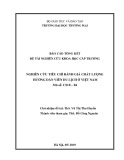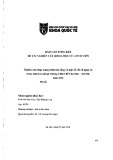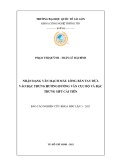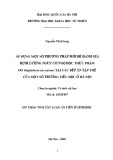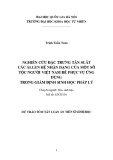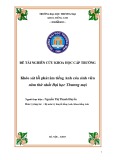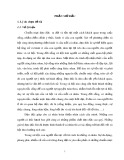
Genet. Sel. Evol. 36 (2004) 363–369 363
c
INRA, EDP Sciences, 2004
DOI: 10.1051/gse:2004006 Note
Computing approximate standard errors
for genetic parameters derived
from random regression models fitted
by average information REML
Troy M. Fa,c∗, Arthur R. Gb,c,
Julius H.J. van der Wa,c
aSchool of Rural Science and Agriculture, University of New England, Armidale,
NSW, 2351, Australia
bNSW Agriculture, Orange Agricultural Institute, Orange, NSW, 2800, Australia
cAustralian Sheep Industry CRC
(Received 21 October 2003; accepted 9 January 2004)
Abstract – Approximate standard errors (ASE) of variance components for random regression
coefficients are calculated from the average information matrix obtained in a residual maximum
likelihood procedure. Linear combinations of those coefficients define variance components for
the additive genetic variance at given points of the trajectory. Therefore, ASE of these com-
ponents and heritabilities derived from them can be calculated. In our example, the ASE were
larger near the ends of the trajectory.
random regression /heritability /approximate standard error /genetic parameter /
residual maximum likelihood
1. INTRODUCTION
Random regression (RR) has been widely used for genetic analysis of lon-
gitudinal data from many of the major animal breeding industries world wide
and has also been implemented into routine large scale animal breeding ap-
plications [4]. Estimates of derived genetic parameters such as heritability at
given points along the trajectory are commonly published from such studies
and comment is often made about the accuracy and robustness of RR mod-
els. However, there have been no attempts to quantify the accuracy of such
estimates for different parts of the trajectory from RR analyses using residual
∗Corresponding author: tfischer@une.edu.au








